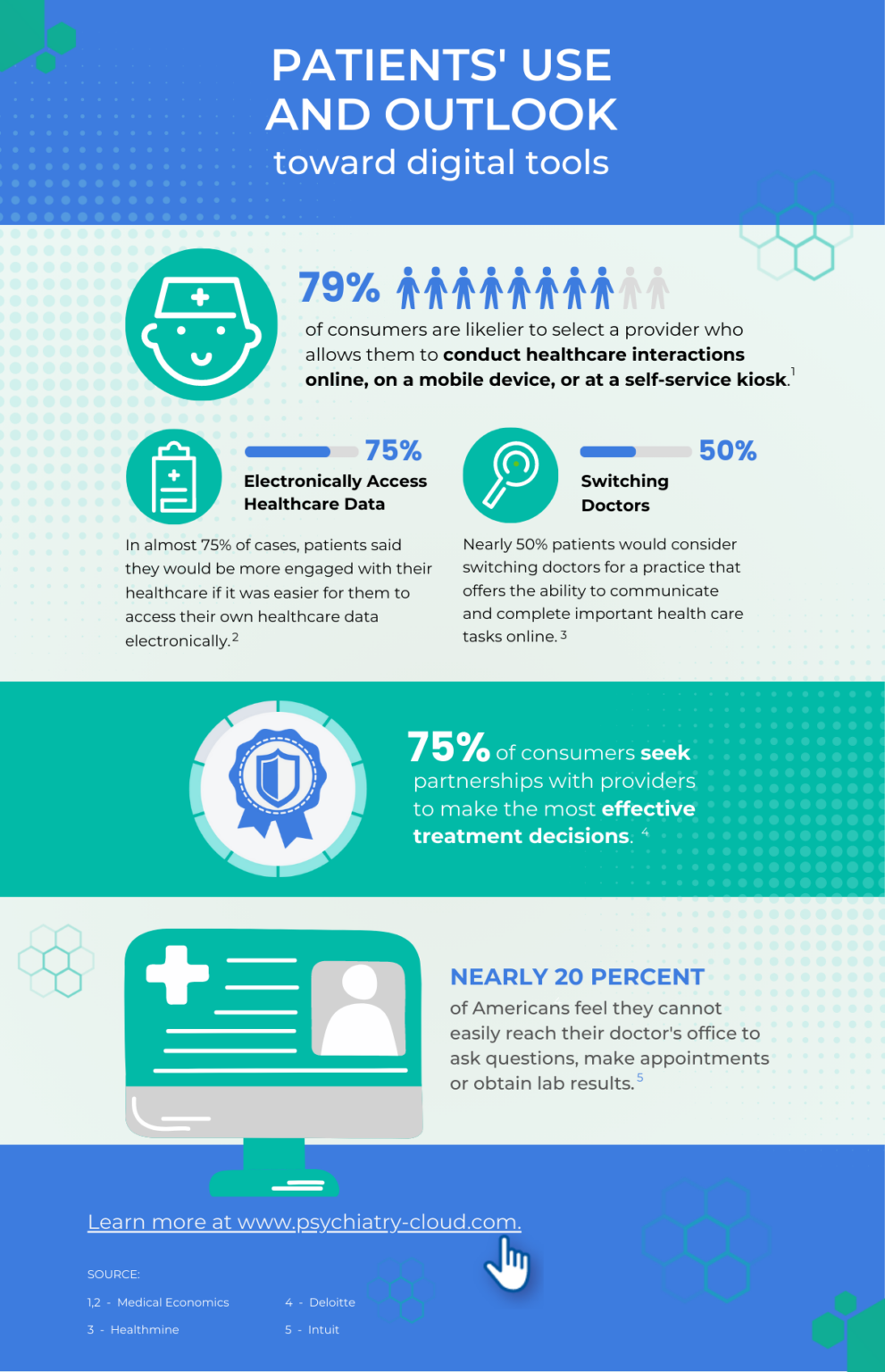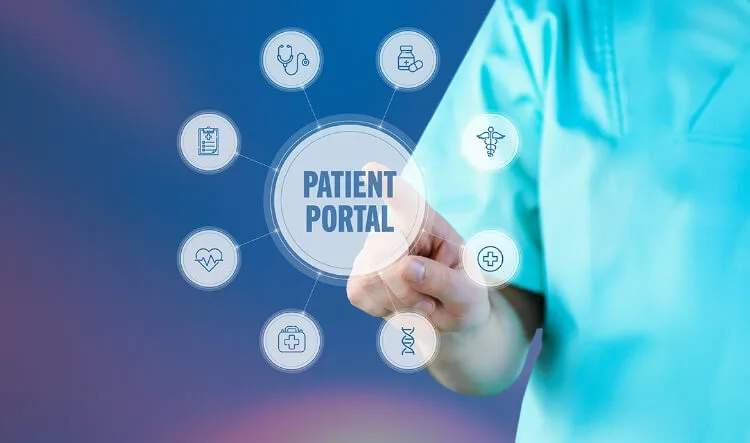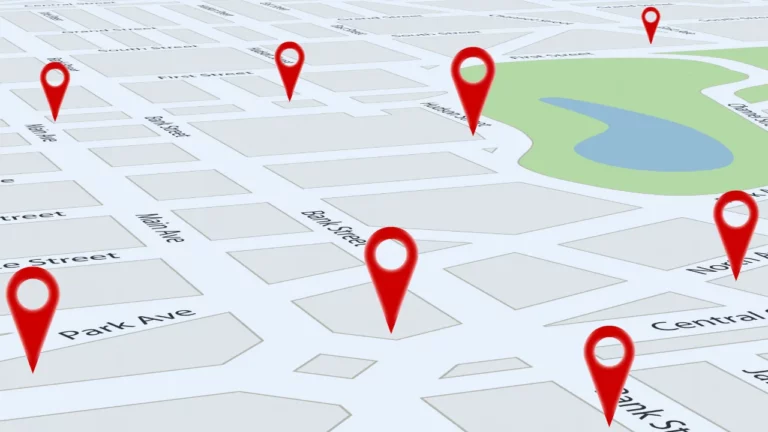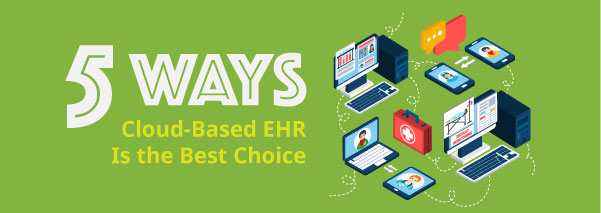Advancements in technology have revolutionized the way we communicate, and healthcare is no exception. Patient care is not confined anymore to the clinic. Patient care now extends beyond the walls of psychiatry clinics. Rightly so because patients’ needs have also evolved. 73% of Americans said they would use an online communication solution to get lab results, request appointments, and communicate with their providers. Convenience is so important that almost half of the surveyed patients would consider switching doctors for a practice that offers the ability to communicate and complete important health care tasks online.
This is why patient portals have become a popular tool for streamlining healthcare communication. This innovative solution has numerous benefits for both patients and providers alike. Patients can access their medical information from the comfort of their own homes, reducing the time and effort required for in-person appointments. Providers can also benefit from patient portals by streamlining their administrative tasks and reducing paperwork.
In this article, we will dive deeper into the benefits of patient portals and how they are transforming the healthcare industry.
Patient portals are usually offered by healthcare providers such as clinics, and medical practices. Patients can sign up for a portal account by providing their personal information, such as their name, date of birth, and contact details. Once registered, they can access their medical information by logging in with their username and password.
Patient portals can reduce administrative tasks for healthcare providers. Patients can upload their medical records and submit necessary forms, while the EHR automatically sends test results, and syncs appointment schedules to the portal, which saves time and effort. They can also send automated reminders to patients for appointments and medication refills, which reduces the need for manual follow-up.
In almost 75% of cases, patients said they would be more engaged with their healthcare if it was easier for them to access their own healthcare data electronically. Patient portals can increase patient engagement by allowing patients to take charge of their health. Patients can access their medical information, track their progress, and receive reminders for appointments and medication refills. They can also access educational resources and information about their conditions, which can help them make informed decisions about their health.
75% of consumers seek partnerships with providers to make the most effective treatment decisions. Patient Portals allow providers to communicate with their patients securely and efficiently, which can lead to better care coordination. Providers can access patient information quickly and easily, which can lead to better decision-making and improved patient outcomes.
Patient portals offer numerous benefits for patients as well. Here are some of the most significant advantages of using a patient portal:
Patient portals allow patients to access their medical information from anywhere, at any time. They don’t have to spend time traveling to their provider’s office or waiting on hold to speak with a receptionist. Patients can view their test results, medication history, and appointment schedules online, which saves time and effort.
Patient portals enable patients to communicate with their healthcare providers securely and efficiently. They can send messages to their providers, ask questions, and receive answers without having to schedule an appointment. This feature is especially useful for patients with chronic conditions who require ongoing communication with their providers.
Moreover, patient portals allow providers to access patient information quickly and easily. Providers can view a patient’s medical history, test results, and medication history in one place.
Improved communication between providers and patients significantly increases patient engagement which can lead to collaborative decision-making and improved patient outcomes.
When communication between patients and providers is improved, patients become activated patients. An activated patient is one who is willing and capable of taking meaningful steps to manage their health and care. Patient portals allow patients to access their medical information, track their progress, and receive reminders for appointments and medication refills. They can also access educational resources and information about their conditions, which can help them make informed decisions about their health. This accessibility to health information empowers patients to manage their health.
Patient portals offer numerous features that make them a valuable tool for patients and providers. Here are some of the most common features of patient portals.
This includes a comprehensive view of their medical history such as lab test results, medication lists, and summaries of previous doctor visits. Keeping track of health progress, identifying errors in records, and sharing health information with other healthcare providers is all possible with this feature.
The secure messaging feature in patient portals facilitates safe, confidential, and direct communication between patients and healthcare providers. This system is encrypted to ensure that sensitive health information is shared securely.
Patient portals allow patients to schedule and manage their appointments online, anytime, anywhere. This in the end not only helps the patient but also improves the efficiency of the clinic or hospital by reducing no-shows and last-minute cancellations.
This feature is particularly beneficial for patients on long-term medication therapy as they can manage their medications effectively, ensuring they never run out. The requests are directly sent to the healthcare provider for review, thereby speeding up the refill process.
This feature adds a level of convenience for patients because they can pay their bills online, which reduces the need for manual billing and processing. Aside from improving the payment collection process for healthcare providers, the patient portal also provides patients with a clear understanding of their medical expenses.
Patient portals must be secure and compliant with healthcare regulations to protect patient information. Providers must implement safeguards such as encryption, access controls, and audit trails to ensure that patient information is protected. Patients must also be educated on how to keep their login information secure and how to report any suspicious activity.
Implementing a patient portal requires careful planning and execution. Providers must evaluate their needs and choose a patient portal solution that meets their requirements. They must also train their staff on how to use the portal and educate patients on how to access and use the portal. Any EHR worth its weight has a patient portal solution that is secure and compliant with healthcare regulations.
Patient portals have transformed healthcare communication by providing a secure platform for patients and providers to communicate. Patient portals offer numerous benefits for both patients and providers, including convenience, improved communication, and better health outcomes. As patient portal adoption rates continue to increase, healthcare providers must implement secure and compliant patient portal solutions to remain competitive and meet patient needs. The future of healthcare communication is digital, and patient portals are leading the way.












